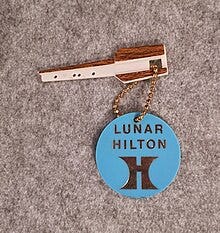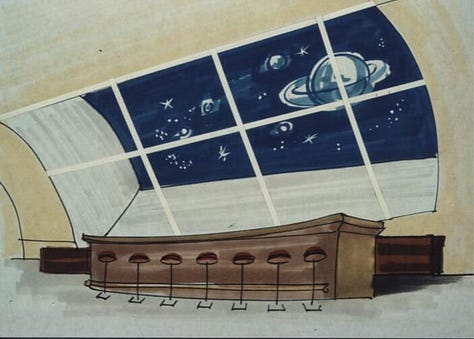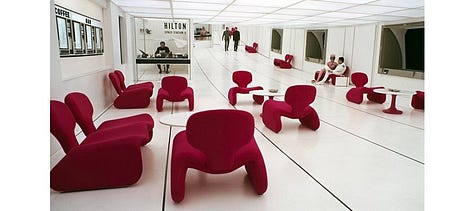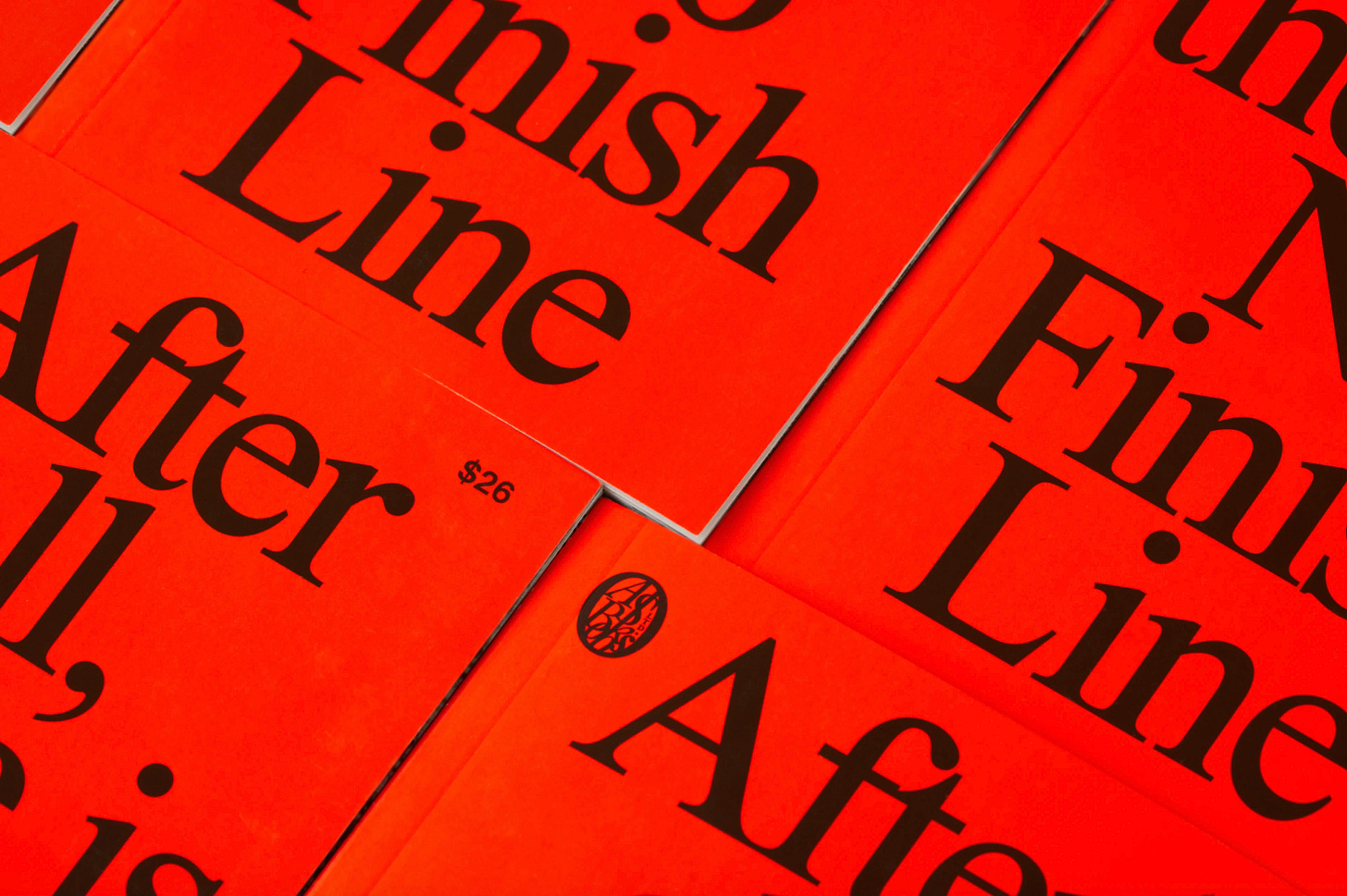📒 Long Read on Forward-Thinking Brands
Space hotels, Meatballs of tomorrow, and Audacious imagination from Portland, Oregon \ ⏱ 6 minutes and 40 seconds
The common notion that we’re living in VUCA times (volatile, uncertain, complex and ambiguous) means it’s probable that people develop a growing need for positive outlook. Triggering politicians to resort to clickbaity, bite-sized, easy to digest and thoroughly market-researched popular ideas, which -don’t worry- I will save for another time. But also, evoking brands taking a stance in public, societal, or future matters. People need stories to live towards.
Both in a business context and as consumers of brands we follow, or buy from, people seem to be looking for stories or POV’s that provide perspective on possible futures.
As one former US-president put it; “Hope is that thing inside us that insists, despite all evidence to the contrary, that something better awaits us if we have the courage to reach for it It's what gives us the strength to push for a better future, even when the road ahead seems uncertain.” Just do it -almost, kind of- right? No?
In this second ‘Field Notes’ dispatch here, I’m looking at how three brands publicly explored possible futures. Yes, futures, plural, because the future is what will actually happen, but until then, anything could be possible. So we talk about futures when we’re exploring how scenarios could potentially unfold.
I’ve been specifically looking at cases where brands didn’t just think, or strategise for future scenarios (much has already been written about that), but also materialised or published their research and scenarios publicly.
I also didn’t want to pull you back in the avalanche of brands throwing their “state of the industry in 2024” trend outlooks online in December of last year. As there are so much more interesting ways to underline industry thought leadership, build an insider-community and guide vision, design and innovation within a company itself.
First off; Literally a Moonshot-idea; The LUNAR HILTON
Two years prior to Neil Armstrong stepping on the moon, the HILTON chain of hotels was already planning to welcome guests in space. The "LUNAR HILTON" project was a visionary concept developed by Barron Hilton in the 1960’s, mirroring the era's fascination with space exploration.
The hotel was envisioned to be located below the moon's surface and include about 100 guest rooms. Barron Hilton was a firm believer in lunar colonization and spent much of his career studying the moon's potential for industrial development.
The estimated price of a stay at the LUNAR HILTON was mentioned in a brochure from 1973, which invited potential guests to the moon. The brochure stated that the costs could be up to $25,000 per person for the trip — I guess inflation-calculation wasn’t part of their future-forecasting extrapolation efforts.
While the project didn’t come to fruition -yet- it remains a testament to the bold thinking, that characterized the late 60’s and early 70’s in the United States.



Proving that even the most ‘out-there’ ideas (pun intended) can become possible futures, in 2022, HILTON HOTELS added a surprising new chapter to this plan, when VOYAGER SPACE announced that HILTON will be the official hotel partner of STARLAB, VOYAGER’s planned free-flying commercial space station.
Unfortunately, Barron Hilton himself wasn’t there to witness the advent of this new stage of his original vision. He passed away, aged 91, in September 2019.
Fueling Internal Innovation, Publicly; IKEA’s SPACE10
IKEA's SPACE10 in Copenhagen was an innovation lab and exhibition space dedicated to creating better and more sustainable ways of living, in line with IKEA's commitment to positively impact people and the planet.
The lab explored the future of living, by addressing major societal challenges such as urbanization, resource scarcity, climate change, and food security, regularly hosting talks and expo’s accessible to the public, publishing books and research reports, and developing products and services.
The inception of SPACE10 was driven by a need for innovation within IKEA. At its foundation, IKEA lacked a strong focus on innovation, and one of SPACE10's primary objectives was to ignite a culture of innovation within the company. It collaborated with experts and trailblazers from around the world to prototype, test, and develop and push innovative ideas around said topics.
SPACE10 announced its closure in August 2023, having achieved its goal of bringing an outside-in approach to innovation to IKEA and influencing the company's innovation culture.
Five cool examples of SPACE10-projects;
A project exploring the future of food consumption, presenting alternative food sources shaped like IKEA's iconic meatballs, including bug-based options
A cookbook aimed at bridging the gap between future food trends and current kitchen practices, featuring recipes with both traditional and unconventional ingredients
An open-source project enabling people to design and create their own bee habitats, addressing the risks to bee populations due to urbanization and agriculture practices
A concept linking physical furniture to a digital asset (NFT tree) that grows in response to the care and repair of the furniture, promoting sustainability
Highlighting the potential of algae as a sustainable supercrop, produced during the Copenhagen CHART Art Fair
Moving Targets — “After all, there is No Finish Line”
Last year, NIKE published “After all, there is No Finish Line”. A future design manifesto meets speculative fiction, meets design strategy, meets bundle of essays.
Following the conceptual and visual playbook of Douglas Coupland’s Shumon Basar’s and Hans Ulrich Obrist’s “The Age of Earthquakes” (or Coupland’s “Shopping in Jail”), this book is a very nice example of a brand putting time and energy into probably a very niche audience that is interested in more than just product, events or commercials.
“No Finish Line” invites and aims to inspire readers to imagine the infinite possibilities of design and sport. It celebrates 50 years of design and innovation in the service of athletes and sport — and sets a vision for the next 50 years.
The book includes a foreword by NIKE’s Chief Design Officer, John Hoke, speculative fiction by journalist Geoff Manaugh, and essays by author Sam Grawe that describe five major shifts design may undergo in the coming decades.
In Hoke’s foreword, he writes, “NIKE’s creative telescope to the future rests on three steadfast and guiding truths: we exist to match our athletes’ dreams and ambitions; the progression of sport requires audacious imagination; and one innovation can ultimately benefit millions. With these truths in sight, we remain fixed on amplifying athletic ability, advancing human potential and inviting everyone - and importantly, every body, to experience sport for themselves.”
The book should be for sale at (or at least orderable by) a local book store near you.
Key takeaways
Formulating and actively sharing informed future visions provide welcome guidance, and inspiration to both internal and external brand-audiences, and an accent of (thought) leadership to a brand’s story
Materialising this vision and really doubling down on execution and fidelity of plans takes them to such a much-much higher level, compared to posting an ‘annual trend report’ online
Ideas can seem outrageous and wild (like Barron Hilton’s), but they can transmit a higher meaning in the short term (HILTON HOTELS is willing to go to the moon to deliver delightful customer experiences) and -who knows- they might come significantly closer decades down the line
Inviting outside voices and collaborating with external experts (like NIKE and SPACE10) elevates your vision from ‘brand message’ to (at least partially) objective view on the matter
Off-topic \ 3 Recommended Reads
🐇 Did You See the Rabbit R1? — a device for doing almost anything. Potentially.
💸 What if Money Expired? — on the idea of money as a perishable good.
🧶 Luxury Fashion Prices have gone Too Far — on conspicuously expensive t-shirts.
Thank you…
…For reading the 002nd edition of FIELD NOTES on Substack!
Going forward, I’ll try to stick to sending an email like this every two or at least three months (it was two weeks more this time, I’ll be better), focusing on one topic related to branding, culture, or creativity. Including references, thoughts, and theoretical background.
I hope you enjoy receiving and sharing these emails. You are very much invited to join the conversation and provide feedback. It greatly improves the quality and makes these newsletters infinitely more enjoyable to do. Thank you in advance.





